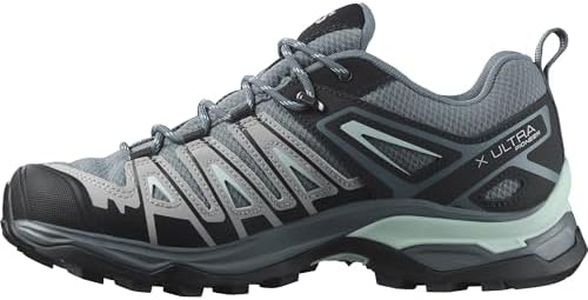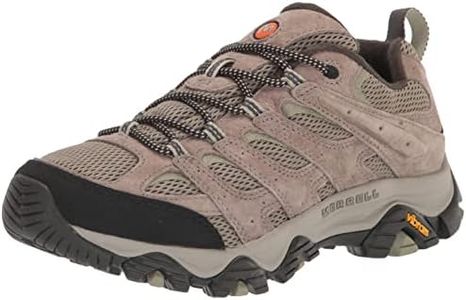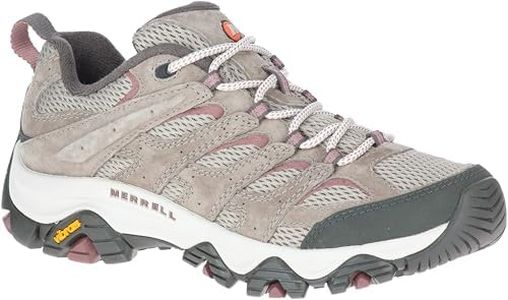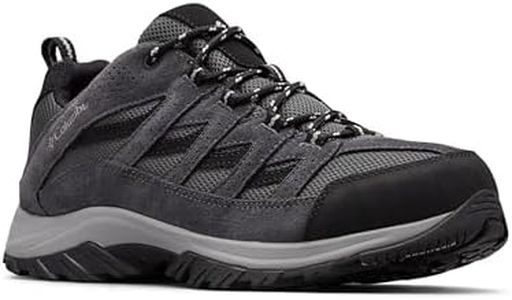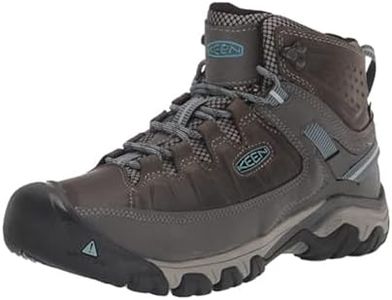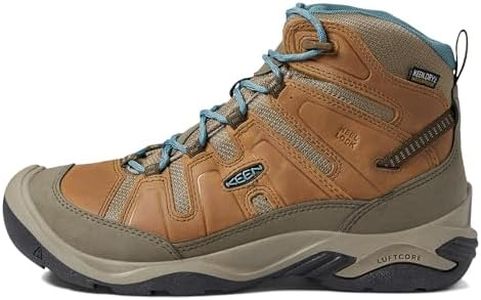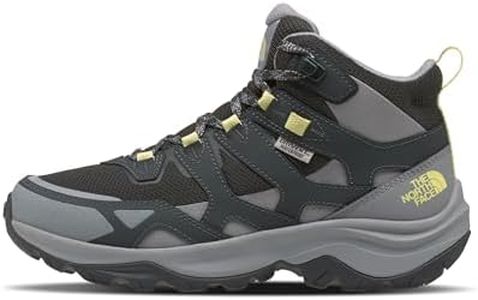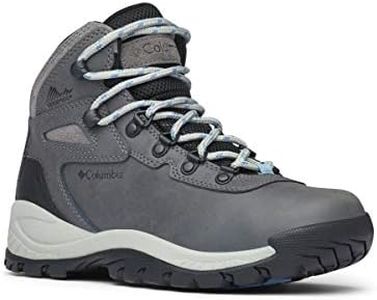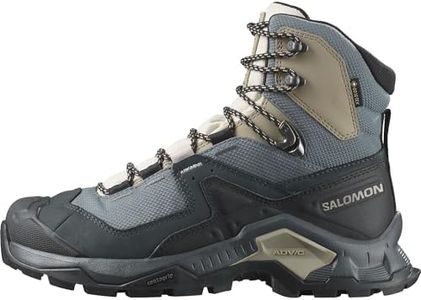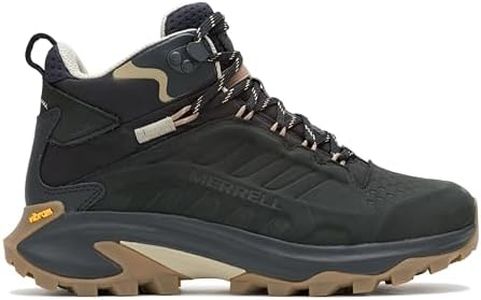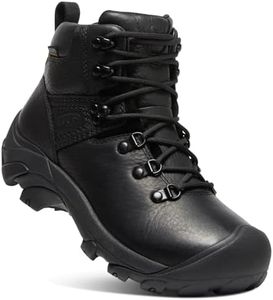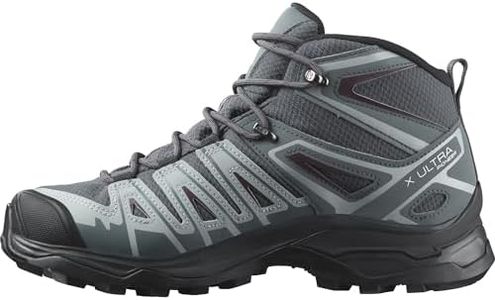We Use CookiesWe use cookies to enhance the security, performance,
functionality and for analytical and promotional activities. By continuing to browse this site you
are agreeing to our privacy policy
10 Best Womens Hiking Boots
From leading brands and best sellers available on the web.Buying Guide for the Best Womens Hiking Boots
Choosing the right women's hiking boots is important for both comfort and safety during outdoor activities. The ideal pair will protect your feet from rough terrain, keep you dry, and help prevent injuries. Before making a choice, think about where and how you will be hiking, the weather conditions you typically encounter, and what feels most comfortable for you. Remember, a good fit and the right features for your hiking style make all the difference.MaterialThe material of hiking boots affects durability, weight, breathability, and water resistance. Common options are leather, synthetic fabrics, or a combination. Leather is long-lasting and very protective, but heavier and less breathable—better for rugged, wet, or cold conditions. Synthetic materials are lighter and dry faster, good for those who hike in warmer or drier places. If you want a balance, combination boots offer moderate weight and decent water resistance. Match the material to your usual terrain and climate.
WaterproofingWaterproofing keeps your feet dry when crossing streams or hiking in rain and snow. Many boots have a waterproof lining or coating. Some are labeled as 'water-resistant' (good for light moisture) and others as 'fully waterproof' (capable of withstanding wet hikes or snow). If you hike mostly on dry days or in deserts, full waterproofing might be unnecessary and can make your feet hot. For unpredictable weather or wet conditions, waterproof boots are helpful.
Ankle SupportAnkle support refers to how high the boot rises and how firmly it holds your ankles. Taller boots with sturdy ankle support can help prevent sprains and give extra stability—this is good for rocky, steep, or uneven trails or if you carry a heavy backpack. Low-cut boots are lighter and less restrictive, which is comfortable for fast hiking on even paths. The right level of ankle support depends on your trail choice and personal comfort.
Sole and TractionThe sole is the bottom of the boot that makes contact with the ground, and traction describes how well it grips. Softer, grippy soles are great for muddy and rocky trails but may wear out faster. Harder soles are durable for lots of miles but can feel stiff. Deep treads provide better grip in slippery conditions, while less aggressive soles are suitable for gentle trails. Consider what types of surfaces you'll encounter most.
Fit and ComfortThe fit is possibly the most critical factor. Boots that fit properly will prevent blisters and discomfort. You should have enough room to wiggle your toes, and your heel should not slip. Try boots in the afternoon when your feet are slightly larger, and wear your usual hiking socks. If you have wide or narrow feet, pay attention to brands known for accommodating those shapes. Fit should never be compromised for looks or features.
WeightBoot weight influences how tired your legs feel after a long hike. Heavier boots provide more protection and durability—these are suited for tough terrain or multi-day treks. Lightweight boots make walking easier and are preferred for shorter, less technical hikes or when moving quickly. Think about how long you’ll be wearing the boots and the type of trails you’ll tackle most often.
BreathabilityBreathability determines how well air can move in and out of the boots, which helps control sweat and keeps your feet cooler. Highly breathable boots use mesh and synthetic fabrics, ideal for warm weather or people who hike in dry areas. Less breathable boots, which are usually waterproof, can feel hot in the summer but are great for colder or wetter environments. Consider what climate you'll use your boots in most often.

